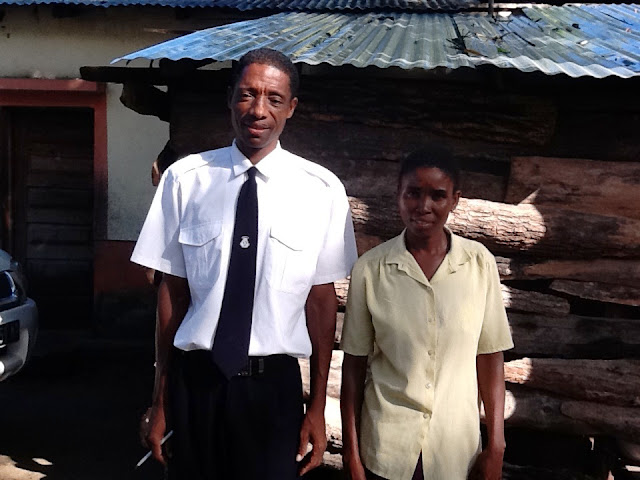Before I begin, let me remind our readers that I do love it here. I have come to love these people and find much that is noteworthy and impressive about them--and I hope that those items get plenty of attention in this blog. But that doesn't make me blind to some of the very challenging aspects about Mozambique and its culture. The picture, taken in limited resolution with my ipad, is not particularly noteworthy--its artistic merits might not win it a pulitzer prize. But as I looked at it, it occurred to me just how many stories and aspects of Mozambican culture were hidden within. The picture:
The first few are easy things.
To the left of the people, you can see a reed mat or esteira leaning against the house. This is what most Mozambicans sleep on. They cost very little and wear out slowly over time. There is not much cushion to them but they are generally a clean place to lay down. In the heat of the day, during the lunch 2.5 hour siesta, people will drag them out onto the dirt of the yard in the shade and use them to lay or sit. I have one and have taken a nap on it and I supose that one could get used to it--but I remain grateful that I brought a queen-sized memory foam mattress with me. As a related note, we are currently visiting Nampulawhich branch of the church that meets in a very large warehouse-like room with concrete walls and arching metal roof--the echo within the chapel is simply horrific--and makes hearing very very difficult. I became a sound engineer today and designed a solution to the problem--which is to hang about eight of these mats from the rafters along the walls to absorb the sound. They do smell rather bad, but I'm thinking that the tradeoff will be an easy one if the plan works.
On the right side of the people is a small grass broom. It can be bought in the market and is the instrument of choice for sweeping one's dirt floor or yard.
The house is somewhat better than is typical here. It has a framed door, it is much taller (high ceilings) and you can see that the cross-beams under the mud covering is made of multiple branches tied together with nylon cord--providing considerably more strength than the single branches that are typical. You may note that the house is raised about a foot above the surrounding earth to keep it dry in the rains. The house costs about USD $18 per month to rent.
The person in yellow with the dazzling smile is Dina, one of our investigators. She is eighteen and has three children, the oldest of which is three or four. Yes, that makes her 14 or so when her first child came--this is not unusual at all. Dina is a woman of great faith--truly impressive, and she has a strong testimony of the gospel--but she is also just a kid--who has had to grow up way befor her time. Her "marraige" is tough because she is very young and very strong willed--and because she has a vsion for the future far different from that of her husband. She hasn't two nickles to rub together, is terribly dissatisfied with her status quo. The gospel is her way up but she must persuade her husband (using the trm loosely) to go through the effort of marrying her, so that she can fully embrace it and be baptized. Dina is tiny--and skinny. The tininess is genetic. The skinniness is Mozambique. Most people do not eat very much here. I don't know many people who are malnourished--but many are only a meal or two away from it. Dina is wearing second hand western clothing as do most people her age, but she carries her infant in on her back in a capulana and will dress up in native atire from time to time. She scowled but grudgingly complied when I asked her to try for something other than pants at church. (I DID make sure that it was clear that it was not high on the eternal list of priorities).
Standing next to Dina is a young girl of 9years of age. The girl was a stranger to Dina just an hour before this picture was taken. But she is now a "filha da casa" or child of the house--something between an indentured servant and a foster child. The girl (whose name I forget at this moment) was an orphan living with grandma well outside the city. Grandma couldnt feed her, and Dina needed help around the house with her own kids (so that she can finish high school this year--and she also just plain likes to escape some times). They struck a deal and Dina will feed her and get her to school in return for her work around the home. The negotiation with grandma, and extraction from her previous school took about a half hour--I drove them all home (she had a small backpack with all her possessions).. This is sometimes a harsh place..

















































